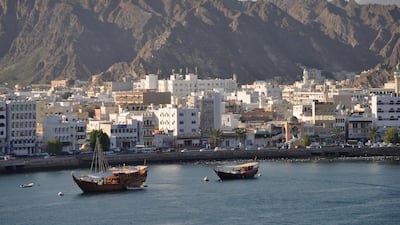Oman is considering the sale of a partial stake in its airports management company by 2020 amid an Arabian Gulf-wide drive towards privatisation and fiscal consolidation in the wake of lower oil prices.
The government has yet to make a decision on whether to proceed with an initial public offering of the state-owned company, Aimen Al Hosni, chief executive of Oman Airports Company, told The National. He declined to reveal the stake size or value.
“We’re pushing to privatise the company and float a certain stake in it,” Mr Al Hosni said. “It’s not a done deal [yet].”
Oman is focusing on developing its aviation sector to diversify its economy beyond petrochemicals revenues. It is implementing phases of a strategy to boost visitor numbers to 11.7 million from 3.3 million currently and create 500,000 tourism jobs for Omanis by 2040. The Gulf state opened a new passenger terminal at Muscat International Airport in March with capacity to handle 20 million passengers annually. The country plans incremental capacity increases to handle 48 million, 70 million and 100 million passengers, respectively, in stages depending on demand.
Muscat airport is targeting 14 per cent increase in passenger traffic to 16 million this year compared to 14 million travellers in 2017 with most of that growth coming from national carrier Oman Air as it begins flights to Russia, Morocco and China, Mr Al Hosni said.
The country’s low-cost carrier Salam Air will move to the new terminal by year-end and is expected to boost growth at the hub, in hopes of eventually replicating the success of budget carriers in Europe and Asia.
The airport, which has 36 airline customers currently, is in talks with prospective carriers to bring that total to 40 this year and has already seen interest from Asian operators, he said.
Oman, a historic trade hub, is seeking to tap into the lucrative passenger traffic between Asia and Africa, a long-haul market traditionally dominated by neighbouring Gulf airline majors Emirates and Etihad Airways.
_______________
Read more:
Oman to introduce new visa rules from March 21
Oman seeking investors for $5 billion tourism project by year-end
_______________
“What we’d like to do is not to compete with them but complement and have our own niche market,” he said. “Oman is rich when it comes to heritage and landscape. We have mountains, desert, beaches. Our heritage is amazing, we have forts and history that we can offer visitors.”
In other regional airports, Mr Al Hosni expects passenger traffic at Salalah airport to reach close to two million travellers in 2018, up from 1.5 million last year.
Duqm airport, in the south-east, is expected to open within six months at most with a capacity of 500,000 annual passengers.
“We are thinking to have it as a logistics hub,” he said.
Oman has accepted a $210 million grant from Saudi Arabia to fund two projects in the port city of Duqm, which it wants to develop as a major hub.
By the end of May, the airports management company is set to shift under the umbrella of Oman Aviation Group which also includes Oman Air and aviation logistics companies from ground handling to catering. The move is meant to align aviation stakeholders under a single holding company to improve efficiency.
Oil proceeds make up about 70 per cent of the Oman government's revenue. A three-year slump in oil prices forced Muscat to raise debt and privatise some state assets. The sultanate, which is trying to diversify its economy and cut its dependence on hydrocarbons, does not have access to the large cash buffers enjoyed by some of its GCC peers, and has therefore had to rely more heavily on capital markets to plug fiscal deficits.


